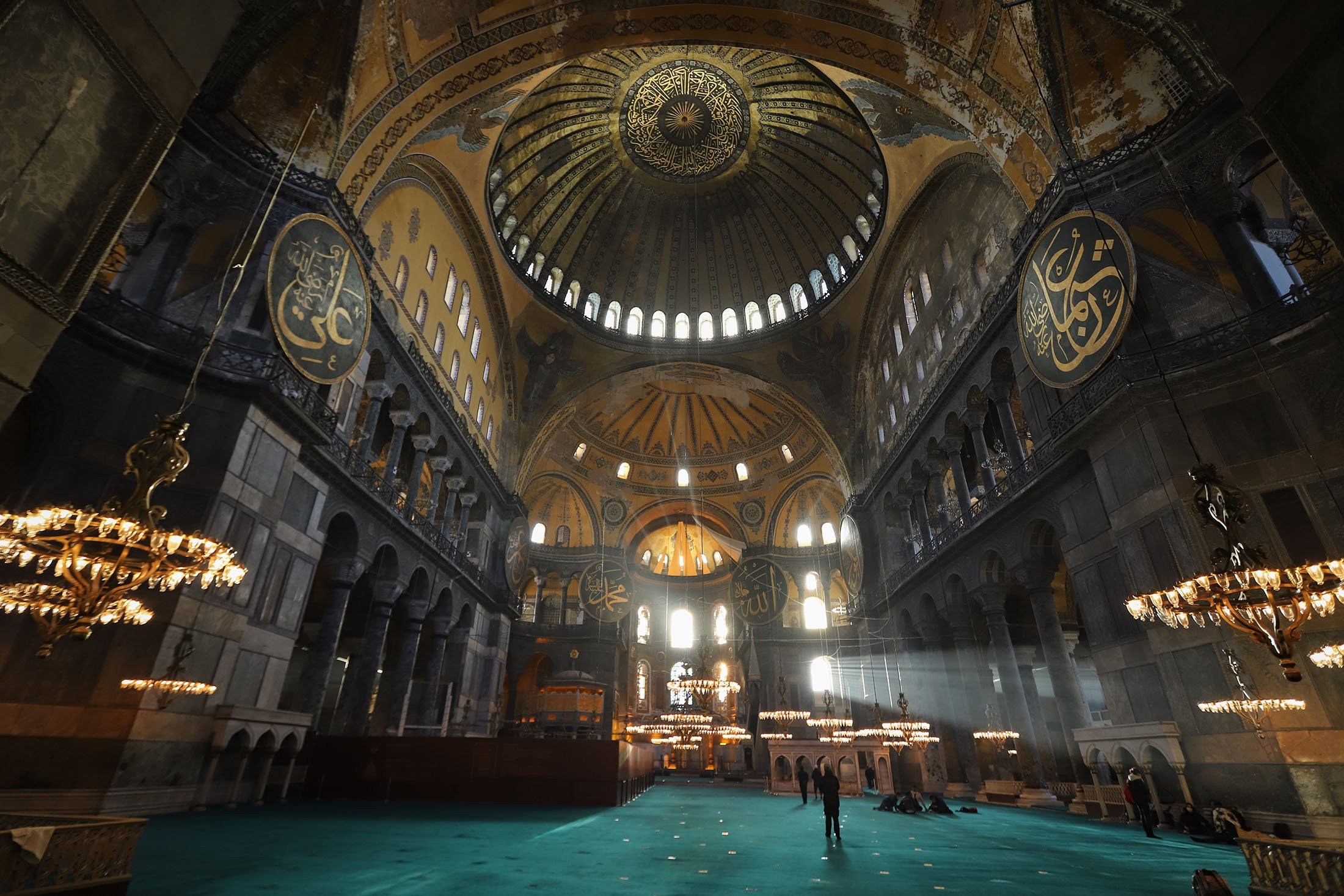© Turkuvaz Haberleşme ve Yayıncılık 2024
Throughout its history, Istanbul has been a city where various cultures, beliefs and religious groups lived and interacted. Therefore, this metropolis is recognized as a special city that offers a unique cultural mosaic and atmosphere of tolerance.
Istanbul is the meeting point of both Eastern and Western cultures. Its historical past has hosted great civilizations such as the Roman, Byzantine and Ottoman Empires. These diverse cultural influences are manifested in the city's architecture, art, music and traditions.
Istanbul is also home to various religious beliefs. Members of Islam, Christianity, Judaism and other religions live peacefully in Istanbul. This is also evident in the presence of different places of worship and religious sites in the city. Mosques, churches, synagogues and other religious structures are located side by side in Istanbul's silhouette.
I would like to briefly discuss different places of worship in Istanbul and their history with a few examples. Let's start with mosques in this one and we will move on to other religions in part two.
The mosque is a religious structure where Muslims gather and worship in Islam. The Turkish word for mosque, "camii," originates from the Arabic root "jem" and means "community" or "gathering." The mosque is a place where the Islamic community comes together, prays and reads the Quran.
The mosque is usually built according to Islamic architecture. A typical mosque has a special niche called the mihrab, which is where the imam leads the prayers. There is also a sermon platform called minbar, from which the imam addresses the congregation. There are also minarets around mosques and they are used as places where the azan, the call to prayer, is read.
Inside the mosques, there is a prayer hall where the congregation prays, a place for ablution and generally a courtyard. Mosques are also used for various religious and social events such as funeral prayers, weddings, gathering during religious holidays, as well as the collective prayers of Muslims. In addition, some mosques may have schools or libraries providing religious education.
Mosques are important in Islamic society as places of worship, and social and cultural centers. They aim to provide social solidarity, continue religious education and training activities, unite the community, and keep religious values alive. In addition, mosques can host relief and support activities to meet the social and humanitarian needs of the community.
Mosques are considered important religious and cultural heritages in the Islamic world and other regions where Muslim communities exist. Each mosque is unique with its own historical and architectural features and plays an important role in the spread and development of Islam.

What are some of the most beautiful and iconic mosques of Istanbul, a city absolutely awash with mosques? Let's take a look.
Hagia Sophia Grand Mosque is one of the most symbolic structures of Istanbul. It was first built as a church in 537 by the Eastern Roman Emperor Justinian I. Later, with the conquest of Istanbul by the Ottoman Empire in 1453, it was converted into a mosque and used as a museum after 1935. In 2020, it started to serve as a mosque again.
The Blue Mosque, built by Ottoman Sultan Ahmed I between 1609 and 1616, is one of the most famous mosques in Istanbul. It draws attention with its interior decorated with blue Iznik tiles and its six minarets. The mosque, one of the most important religious centers of the Ottoman Empire, is still actively used for worship.
Sultan Suleiman I had the famous architect Mimar Sinan build the Süleymaniye Mosque between 1550 and 1557. It is one of the largest and most impressive mosques of the Ottoman Empire. The mosque complex has many additional structures, such as a madrasah, library, hospital and bath. Süleymaniye Mosque is the darling of Istanbul.
The New Mosque, built by Sultan Ahmed II between 1597 and 1663, is the icon of Istanbul's Eminönü, with a large courtyard, dome and minarets. The inner settlement is covered with dazzling tiles. The New Mosque is still used as an active place of worship.
The Şehzade Mosque, built by Mimar Sinan between 1543 and 1548 for Sultan Selim II's son, Şehzade Mehmed, is an important example of Ottoman architecture. The mosque was accepted as one of the largest mosques of the period in Istanbul.
Mihrimah Sultan Mosque, located in Usküdar and built by Mimar Sinan for Mihrimah Sultan in the 16th century, draws attention with its elegant minaret and fine details.
Rüstem Pasha Mosque, commissioned by Rüstem Pasha in the 16th century, is one of the works of Mimar Sinan. Located in Eminönü, the mosque is especially famous for its rich tile decorations.
Mahmutpaşa Mosque, located in Mahmutpaşa, was built by Sultan Mahmud II in the 18th century. It has an unpretentious and simple architecture but has great historical and cultural significance.
Atik Ali Pasha Mosque, built by Atik Ali Pasha, is in the Fatih district. A beautiful example of Ottoman-era architecture, the mosque has a quiet and peaceful atmosphere.
Built by Sultan Mahmud II in the 19th century, Nusretiye Mosque is located in the Tophane district. Featuring classical Ottoman architecture, this mosque has an impressive courtyard and an elegant minaret.
